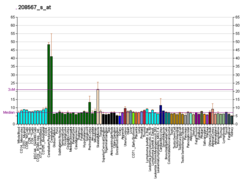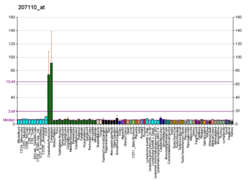| KCNJ12 | |||||||||||||||||||||||||||||||||||||||||||||||||||
|---|---|---|---|---|---|---|---|---|---|---|---|---|---|---|---|---|---|---|---|---|---|---|---|---|---|---|---|---|---|---|---|---|---|---|---|---|---|---|---|---|---|---|---|---|---|---|---|---|---|---|---|
 | |||||||||||||||||||||||||||||||||||||||||||||||||||
| Identifiers | |||||||||||||||||||||||||||||||||||||||||||||||||||
| Aliases | KCNJ12 , IRK-2, IRK2, KCNJN1, Kir2.2, Kir2.2v, hIRK, hIRK1, hkir2.2x, kcnj12x, potassium voltage-gated channel subfamily J member 12, potassium inwardly rectifying channel subfamily J member 12 | ||||||||||||||||||||||||||||||||||||||||||||||||||
| External IDs | OMIM: 602323; MGI: 108495; HomoloGene: 7793; GeneCards: KCNJ12; OMA:KCNJ12 - orthologs | ||||||||||||||||||||||||||||||||||||||||||||||||||
| |||||||||||||||||||||||||||||||||||||||||||||||||||
| |||||||||||||||||||||||||||||||||||||||||||||||||||
| |||||||||||||||||||||||||||||||||||||||||||||||||||
| |||||||||||||||||||||||||||||||||||||||||||||||||||
| |||||||||||||||||||||||||||||||||||||||||||||||||||
| Wikidata | |||||||||||||||||||||||||||||||||||||||||||||||||||
| |||||||||||||||||||||||||||||||||||||||||||||||||||
ATP-sensitive inward rectifier potassium channel 12 is a lipid-gated ion channel that in humans is encoded by the KCNJ12 gene. [5] [6] [7] [8] [9]





